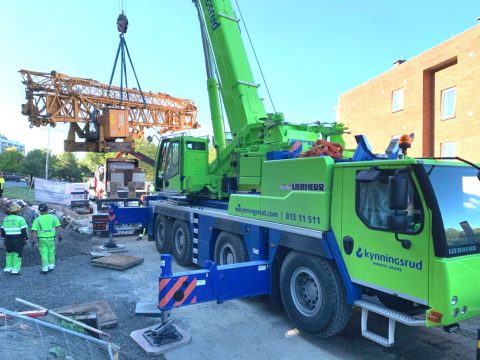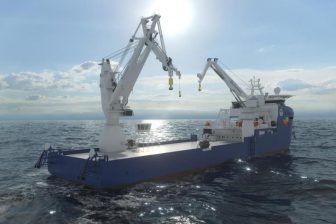
Liebherr to cut emissions in Ehingen with HVO
Liebherr is making steps in decarbonising operations at its Ehingen facility by powering its mobile and crawler cranes exclusively with pure HVO fuel starting September 2021.
Modern HVO is a synthetic fuel manufactured mainly from vegetable and animal oil and fat waste from the food industry. This is converted into hydrocarbons by adding hydrogen. HVO is an abbreviation which stands for hydrogenated vegetable oils. The major benefit of HVO is that using it as a fuel instead of fossil diesel is essentially CO2-neutral. In the future, this fuel will be used in all Liebherr mobile and crawler cranes. One of Liebherr’s main focus is to ensure, in partnership with its HVO suppliers and manufacturers, that no foodstuffs, particularly palm oil, are used in the production of its HVO.
Liebherr mobile and crawler cranes – ready for action with HVO
The conversion from fossil diesel to HVO fuel will apply to the crane acceptance procedure and test drives as well as to the initial fuelling of cranes before delivery. Over the last few months, Liebherr has been working on preparing its entire range of mobile and crawler cranes for use with HVO. For this purpose, the diesel engines were first checked, certified and approved by the manufacturers. The cranes have also undergone extensive testing and trials with pure HVO by customers and in the company’s own Test Department., the company said in its statement.
Ulrich Hamme, managing director design and development at Liebherr in Ehingen said, “If we consider the entire life-cycle of a crane from cradle to grave, including its production, CO2 emissions from a five-axle crane using HVO fall by 74 percent compared to a crane powered by diesel. This was shown in a study and calculation carried out by business consultancy Frontier Economics. This is an important step in reducing CO2 emissions.”
The main reduction in CO2 emissions is during the operating phase – which is particularly significant for Liebherr cranes due to their high quality and the resultant long service life. To achieve the maximum possible CO2 reductions, the crane must be powered permanently using pure HVO.

HVO is also an alternative fuel for existing fleets
HVO and synthetic fuels made using renewable energy sources are an interesting concept for Liebherr as they are suitable for use in existing machines right now. Liebherr attaches a great deal of value to the durability of its products. Alternative fuel types such as HVO enable older Liebherr machines with internal combustion engines to be operated in essentially climate-neutral form. For all Liebherr engines up to the 560 KW power class, for example, they are approved for operation with HVO.
In Europe, but also in Asia, Africa or South America, lots of machines with internal combustion engines continue in use for a great many years and therefore also affect the climate. As HVO can be added to fossil diesel fuel in any ratio and used with conventional internal combustion engines, most of these machines in existing fleets all over the world can in fact be powered effectively with HVO right away. The CO2 saving is reduced accordingly with a lower HVO content in the fuel mixture.
Reductions in CO2 emissions by using HVO in vehicle at the plant in Ehingen
Liebherr has also analysed all of its plant transport vehicles at the Ehingen site. The results show that the fleet can also be powered by HVO with a few exceptions. Liebherr is therefore planning to switch these vehicles to the climate-neutral fuel in the near future.
“As a result, we will be able to save 2.5 million litres of fossil diesel per year by switching to HVO fuel. That will mean an annual reduction of around 6500 tonnes of CO2”, is how production director at Liebherr-Werk Ehingen, Ulrich Heusel describes the expected result of the action at Liebherr’s Ehingen plant.
One of the challenges, in part, is the practicability and availability of alternative fuels. “To make HVO or other synthetic fuels attractive for crane operators, they must be available nationwide and in plentiful quantities at filling stations, as is the case today with diesel. That will not be possible from one day to the next. But Liebherr is making a start, and we are hopeful that it will have a signal effect”, says Hamme.
Heusel, continues:added, “Germany has included synthetic, paraffin-based fuels, which do not yet comply with EN 15940 (XTL), in its regulations relating to the quality of fuels. This is why HVO is not yet available at the filling station network. HVO is available at public filling stations for road vehicles in Finland, Sweden, Denmark, Norway, the Netherlands and Belgium as an additive for fossil diesel fuel or in pure form.”




